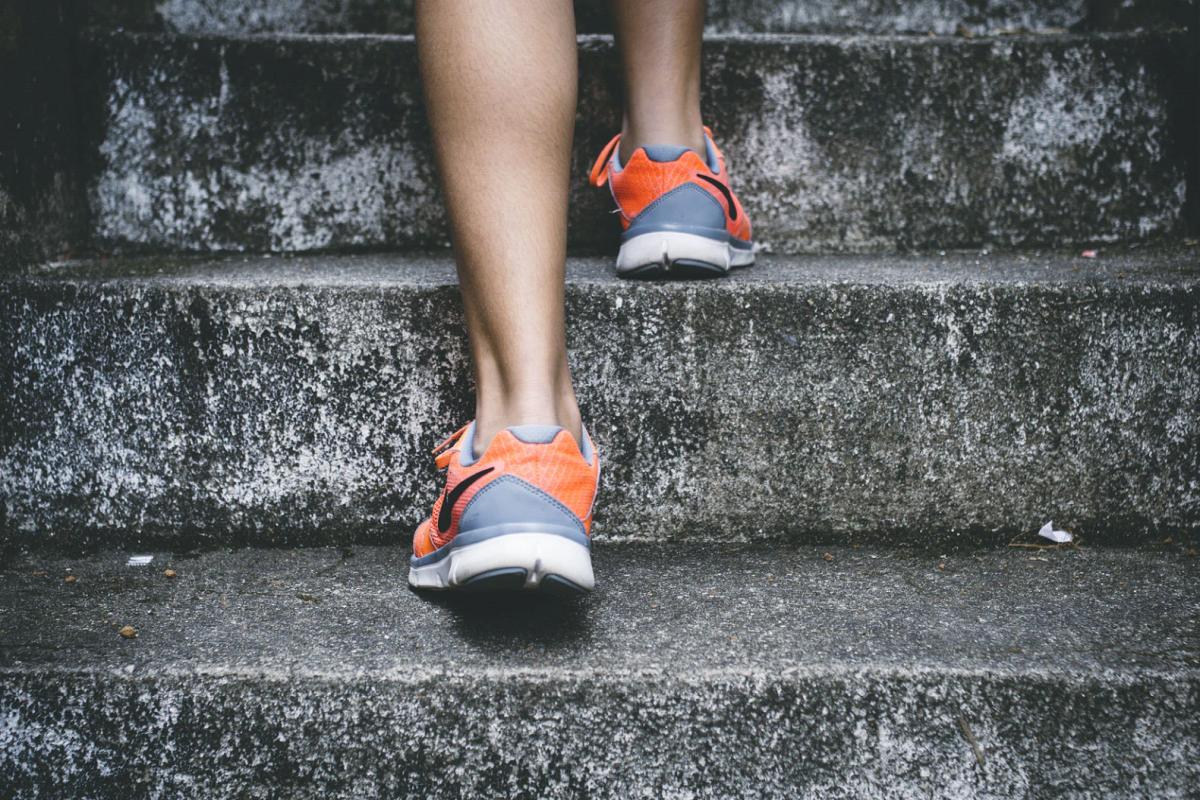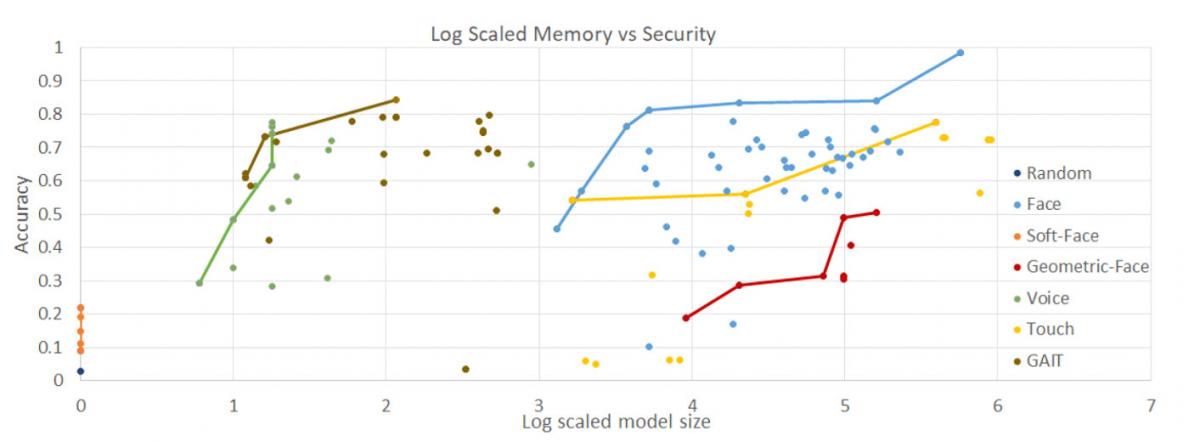Could the Way You Walk Help Secure Your Data?
Wed, 09/01/2021 - 12:00
Measuring and analysing a person’s gait is shedding light on new methods of protecting data and devices.
Embedded in smartphones, smartwatches and other wearables these days are sensors that record your daily step count. But did you know that by tracking the way you walk — your gait — these sensors know a lot more than just whether or not you reached your step target?
These sensors, commonly known as Inertial Measurement Units (IMU), tiny electronic circuits do this by calculating acceleration and rotation, explained Dr Terence Sim, Principal Investigator, NUS Centre for Research in Privacy Technologies (N-CRiPT). They are found in most smart devices.
By tracking gait, IMUs can reveal your height, weight, age, gender and whether you are right-handed or left-handed. They can even detect walking abnormalities or changes in walking habits, making gait data suitable for authentication and security applications.
Dr Sim’s research also shows that, compared to other means of user authentication, such as facial, fingerprint, and gesture recognition, gait consumes less power but provides the same level of accuracy. This means that it could be a more energy-efficient alternative to secure smart devices and provide personalised services.
Studying gait data more closely
Dr Sim and researcher Sanka Rasnayaka wanted to know exactly which attributes gait data could accurately reveal. Could it even go as far as to reveal insights into a person’s socio-economic background?
To find out, they used IMUs to track the gait of over 50 participants.
Before the experiment, the researchers recorded the participants’ physical attributes such as age, sex, height, and weight, broad personality traits, such as introversion and extroversion, and spending habits to estimate household income.
Sensors were then attached to the wrists, shoes, and thighs of the participants. The researchers then asked participants to perform a range of physical activities such as walking, running, as well as climbing up and down staircases and slopes. To simulate different smartphone use scenarios, the researchers also asked participants to position their wrist next to their ear to simulate making a phone call and to place a sensor inside their handbag to recreate having a phone in one’s bag. The study’s researchers then used Machine Learning to process the data.

What your walking reveals about you
Dr Sim found that gait data is excellent at predicting physical attributes and could do so extremely quickly, with just 0.3 seconds of gait observation or about ⅓ the time it takes for someone to take a step.
It was 100% accurate at identifying gender, predicted the participant’s height within 6.3 cm and weight within six kilograms of the actual measurement, and was able to pinpoint a person’s age, give or take six years. Gait data could also tell whether a participant was right- or left-handed nine out of ten times.
However, with regard to personality attributes and socio-economic status, gait data was far less useful and did not yield any significant results.
How does gait data stack up against other biometrics?
In his sharing, Dr Sim was also able to dive into a comparison between the performance of various biometrics commonly used for identification. He observed that face recognition yields similarly accurate results when compared with gait data but consumes significantly higher energy. Voice, on the other hand, needs similarly high levels of energy but is not as accurate. While touch consumes less power, its accuracy lags behind face or gait recognition.
As organisations look for increasingly robust ways to secure and protect data, the global biometric system market is set to grow at a CAGR of 18%, and solutions with a sustainable edge will be increasingly prioritised. Because of this combination of lower energy consumption and accuracy, he notes that gait recognition could one day become a viable, more sustainable complement to the current solutions we have today.
The future applications of gait authentication
One important advantage the IMUs embedded in smart devices have over others is their ability to carry out Continuous Authentication, a process by which the device constantly checks for the presence and identity of its user.
This is useful for automatically locking and unlocking devices, centralising authentication and improving security across apps, especially after the user has stopped using the device or accessing a particular service. Apps that require a higher level of data security like those used for banking and government services could find this useful as an alternative to facial recognition.
In the future, gait may even be able to tell if someone has stolen your device: Dr Sim found that the technology can detect within just 30.8 milliseconds if someone else has started using the device. These IMUs can begin collecting data once a deviation from the approved user is detected, which could also be used as evidence in court.
Such applications are still in their infancy, and Dr Sim was quick to point out that Continuous Authentication is still a nascent technology. He also predicts that gait will most likely be used as an additional layer of security to complement one-time authentication rather than as a standalone authentication tool.

Dr Sim and his team’s research on various biometric authentication methods (Source)
Balancing privacy and convenience
As with the handling of any biometric data, discussions around privacy issues such as the mode and amount of data collected through our devices are critical to the safe adoption of any technology.
Unlike fingerprint or facial data, the depth of gait data collected can vary depending on users’ habits. The research team found that phones kept in the subjects’ clothing pockets yielded the most accurate and complete data compared to those who placed their phones in their bags.
Gait data is also of significant interest to those in the law enforcement and security sector in the area of surveillance as a means of complementing facial recognition technologies which often require visuals of a specific quality. As with wider discussions around data and privacy, there are many perspectives on the deployment of this technology — China and Japan have already begun rolling out pilot projects exploring its use, while European Union lawmakers have called out for a “general ban” on the use of AI-augmented recognition technologies in public places.
The road ahead
Such conversations are necessary for the safe development and deployment of gait recognition technologies as they continue to be refined. This will be particularly important as researchers also begin to explore the potential of gait recognition in the context of intelligent healthcare and use wearables to collect more personal health data.
Only through a collaborative effort between members of the scientific community, entrepreneurs commercialising the technology, as well as ecosystem enablers and regulators will we be able to tap on its full potential in a fast yet safe manner.
To learn more about exciting developments in gait research, check out Dr Sim’s webinar on Youtube or take part in upcoming SGInnovate virtual events to gain more insights into health and biomedical technologies.
Trending Posts
- How leaders should rethink cybersecurity strategy
- The future of fusion energy: What will it take to bring the power of the stars to earth?
- Keeping satellites safe: How CYSAT Asia 2026 is tackling space cybersecurity
- How an aerospace engineer charted a path to quantum technology
- Scaling nanomaterials is challenging — Meet the startup with a hybrid solution






